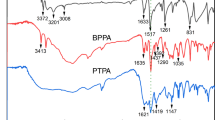Abstract
The purpose of this work is to choose the most efficient methods to recycle caustic waste from the naphthenic acid-removing treatment of light oil fractions. The processes of the formation of pyrophoric deposits in various industries are studied. In the context of the danger of pyrophoric iron sulfides, existing ways and means of deactivating these compounds are analyzed. A review of the patent literature showed that the studied firefighting foaming agents can be divided into two groups, such that the agents in the first group are conventionally based on hydrocarbon surfactants, whereas the agents in the second group include at least one fluorinated component. The feedstock to produce the foaming agent was chosen to be caustic waste from the treatment of light petroleum products. The process of producing a foaming agent includes the simple mixing of calculated amounts of its components at an ordinary temperature. The fire-extinguishing efficiency of this agent is nonuniquely related to the concentrations of the components. The recommended foaming agent in all its main qualities is on a par with popular brands of foaming agents and, in a number of parameters (pour point and foam-expansion ratio in a GVP-600 generator), is even superior to them.

Similar content being viewed by others

REFERENCES
Babaeva, S.G. and Mansimov, Yu.A., On the problems of the deactivation of pyrophoric compounds, İnsanların həyat fəaliyyətinin təhlükəsizliyi problemliləri və onun tədrisi üzrə mütəxəssislərin ikinci respublika elmi- praktiki konfrans, Baku, 1999, pp. 126–127.
Mansimov, Yu.A., Kuliev, T.M., and Kafar-zade, S.D., A deactivator for pyrophoric iron sulfides, Materialy III Mezhdunarodnoi konferentsii “Ekologiya i okhrana zhiznedeyatel’nosti” (Proc. III International Conference “Ecology and Protection of Life Activity”), Sumgait, 2000, pp. 127–128.
Mansimov, Yu.A., AZ Patent 2000 0208, 2000.
EP Patent 276912.
Poole, S., GB Patent 2179043, 1989.
Cundasawmy, E. and Cowan, G., US Patent 4770794, 1988.
GOST (State Standard) 4.99-83: System of Product Quality Indexes. Foaming Agents for Fire Extinguishing. Nomenclature of Indexes, 1983.
Sharovarnikov, A.F., Protivopozharnye peny (Foams for Fire Extinguishing), Moscow: Znak, 2000.
Author information
Authors and Affiliations
Corresponding author
Additional information
Translated by V. Glyanchenko
Rights and permissions
About this article
Cite this article
Guseinova, L.A., Makhmudova, L.A. Development of a Pyrophoric Deposit Deactivator Based on Caustic Waste from the Naphthenic Acid–Removing Treatment of Oil Fractions. Theor Found Chem Eng 54, 1074–1077 (2020). https://doi.org/10.1134/S0040579520050103
Received:
Revised:
Accepted:
Published:
Issue Date:
DOI: https://doi.org/10.1134/S0040579520050103



